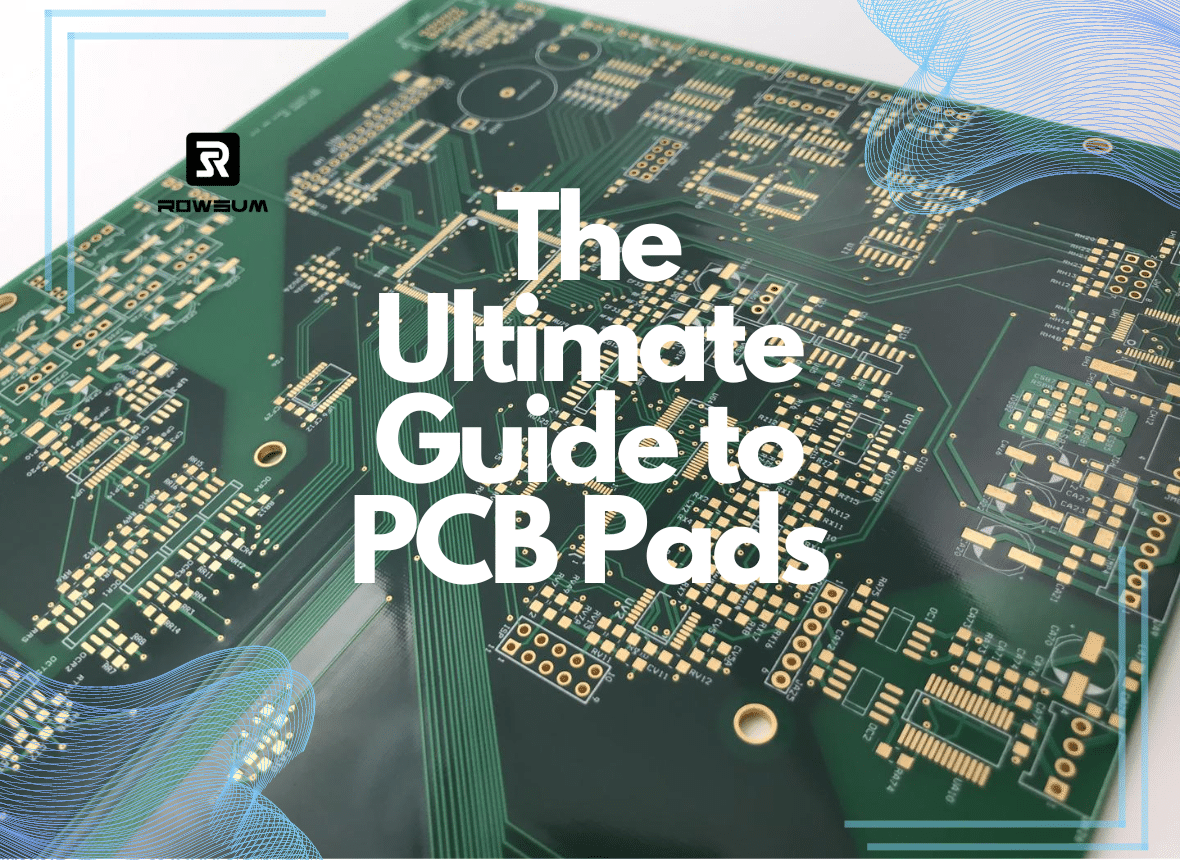Introduction
Navigating through the world of PCB design, you might have stumbled upon varying terms for copper thickness: 1OZ, 35um, 1.4mils. What do these numbers actually mean for your projects?
In the realm of PCBs, ‘copper thickness’ is commonly measured in ounces per square foot, where 1OZ corresponds to about 35um (micrometers) or 1.4mils. This standardization is key to ensuring your PCB’s performance, impacting everything from electrical conductivity to mechanical strength.Dive into this guide to understand how these metrics translate into the efficiency and reliability of your electronic designs.
Decoding Copper Weight and Thickness
The Alchemy of Copper Weight and Thickness
At first glance, the term ‘copper weight‘ might conjure images of physical scales and measurements in ounces. However, in the PCB universe, this term is a nuanced indicator of thickness. When we talk about 1 oz/ft² copper, we’re referring to a layer of copper that, when evenly spread across a square foot, would weigh one ounce. This seemingly abstract measurement translates to tangible thickness metrics, offering a bridge between conceptual weight and practical application on the PCB.
From Concept to Calculation
Navigating the conversion from copper weight to thickness requires a dive into the realm of mils and microns. For instance, a standard 1 oz/ft² copper layer unfolds into a thickness of approximately 1.34 mils or 34.1 microns. This conversion isn’t just numerical gymnastics; it’s the key to unlocking the electrical and thermal performance potential of a PCB. Thicker copper layers promise lower resistance and enhanced heat dissipation, pivotal factors in the high-stakes world of PCB design where every millivolt and milliampere matters.
Navigating the Copper Spectrum
The journey through copper thickness isn’t one-size-fits-all. The spectrum ranges from the standard 0.5 oz/ft² to the robust 20 oz/ft², with each gradation tailored to specific needs. The choice between a lighter 0.5 oz/ft² and a standard 1.0 oz/ft² layer might seem inconsequential at first glance. Yet, this decision is steeped in considerations of DC resistance, heat dissipation, and the nuanced balance between performance and cost. For applications where power distribution spans extensive PCB territories, minimizing voltage drop and heat is paramount, guiding the hand towards thicker copper selections.
Consider a compact smartwatch PCB where heat management is paramount. A standard 1 oz/ft² might suffice, but stepping up to 2 oz/ft² could markedly improve heat dissipation, ensuring user comfort and device reliability without a significant cost hike.
The Heavyweight Contenders
In the arena of high-power PCBs, heavy copper makes its mark. These applications, where currents surge and temperatures climb, demand a copper thickness that can shoulder the load without faltering. Industry guidelines, such as those from IPC, offer a compass for navigating these high-stakes decisions, blending empirical formulas with practical experience to pinpoint the ideal copper thickness that harmonizes current capacity with thermal resilience.
Why Copper Thickness Matters in Your PCB Design
In the intricate dance of creating a PCB, the selection of copper thickness is not a detail to be glossed over; rather, it’s a fundamental choice that significantly influences the board’s performance, durability, and even its cost. This chapter delves into the myriad ways copper thickness impacts your PCB design, illuminating why this parameter deserves careful consideration.
Electrical Performance and Signal Integrity
At the heart of every PCB lies its capacity to conduct electrical signals with precision and efficiency. The thickness of the copper layer directly affects the board’s current-carrying capacity and signal integrity. Thicker copper layers can handle higher currents without overheating, reducing the risk of damage to the board and connected components. Moreover, in high-frequency circuits, the right copper thickness can help maintain signal integrity by minimizing signal loss and impedance variations.
Heat Management
As electronic devices become increasingly powerful, managing the heat they generate becomes critical. Copper’s excellent thermal conductivity makes it a key player in heat dissipation. The thicker the copper layer, the more efficiently it can spread heat away from hot spots on the board, contributing to better thermal management and reliability of the device. This aspect is especially crucial in high-power applications where excessive heat can compromise the performance and lifespan of electronic components.
Mechanical Strength and Durability
Copper thickness also lends mechanical strength to the PCB. Thicker copper layers can provide additional structural integrity, making the board more robust and resistant to physical stresses such as bending or twisting. This enhanced durability is particularly valuable in applications where the PCB may be subject to rough handling or extreme environmental conditions.
Cost Implications
While the benefits of thicker copper are clear, it’s important to balance these advantages with cost considerations. Heavier copper layers require more material and can complicate the manufacturing process, potentially increasing the overall cost of the PCB. Designers must weigh the performance benefits against the financial impact, striving for a copper thickness that meets the circuit’s needs without unnecessarily inflating the budget.
Design Flexibility and Complexity
The choice of copper thickness can also affect design flexibility and complexity. Thicker copper can limit the minimum trace widths and spacing, potentially constraining the design of highly compact and complex PCBs. Designers must navigate these limitations, ensuring that the selected copper thickness supports the desired circuit density and layout complexity.
In conclusion, copper thickness is a critical design parameter that influences a PCB’s electrical performance, thermal management, mechanical durability, cost, and design flexibility. As such, selecting the appropriate copper thickness is a strategic decision that requires a comprehensive understanding of the PCB’s intended application, performance requirements, and budget constraints. By giving due consideration to this aspect, designers can optimize their PCBs for reliability, efficiency, and cost-effectiveness, ensuring that the final product meets or exceeds expectations.
Best Practices for Thermal Management in PCB Design
Effective thermal management is pivotal in PCB design, ensuring devices operate within optimal temperature ranges and maintain their performance and reliability over time. This section delves into strategic approaches to optimize heat dissipation, emphasizing the role of copper and intelligent design decisions.
Leveraging Copper for Heat Dissipation
- Copper Planes and Layers: Copper planes act as excellent heat spreaders due to copper’s high thermal conductivity. Opting for a thicker copper plane can significantly enhance heat distribution, aiding in the uniform dissipation of heat across the PCB. Balance the choice of copper thickness with design complexity and cost considerations to achieve optimal thermal management without unnecessarily inflating the budget.
- Thermal Vias: Thermal vias are a crucial component in transferring heat from hot spots to copper planes or external heatsinks. For more effective heat transfer, filling these vias with a conductive material can be beneficial. Strategic placement of thermal vias under or near high-heat components maximizes their utility.
Strategic Component Placement
- Heat Generation Mapping: Begin your design process by identifying components that generate significant heat. Place these components strategically to ensure they have adequate access to cooling mechanisms, such as airflow, and are sufficiently distanced from temperature-sensitive parts, reducing the overall thermal risk.
- Thermal Path Creation: The PCB layout should facilitate clear thermal paths from heat sources to dissipation zones, such as the board’s edges or dedicated heatsinks. This ensures that heat is effectively removed from critical areas, maintaining device integrity.
Optimizing Trace and Pad Design
- Wider Traces for High Current Paths: Traces carrying higher currents can benefit from increased width, which reduces resistance and, consequently, heat generation. Utilize PCB design software to determine the ideal trace width that balances current capacity with minimal thermal impact.
- Heat-Sinking Pads: Designing pads with larger copper areas, particularly under power components, can serve as mini heatsinks. This design consideration can significantly enhance localized heat dissipation, safeguarding critical components from overheating.
Material Selection and Stack-up Consideration
- High Thermal Conductivity Materials: Choosing substrate materials with superior thermal conductivity can markedly improve heat transfer through the PCB. Materials like aluminum or metal core PCBs are especially suited to high-temperature applications where efficient thermal management is crucial.
- Layer Stack-up: Tailoring the PCB stack-up to include dedicated thermal layers can further bolster heat dissipation. These specialized layers can facilitate broader heat distribution, aiding in the overall thermal management strategy.
Thermal Relief and Isolation
- Thermal Relief for Pads: Employ thermal relief pads to prevent excessive heat from being conducted into larger copper areas during soldering processes. This consideration not only aids in assembly but also mitigates the risk of heat-related damages.
- Isolate Heat Sources: Where feasible, isolate high-heat components both physically and thermally from sensitive areas. This might involve creating spatial separation or incorporating thermal barriers to shield vulnerable components.
Simulation and Testing
- Thermal Simulation: Leverage thermal simulation tools in the design phase to anticipate thermal behavior, identify potential overheating issues, and make necessary design adjustments before prototyping.
- Prototype Testing: Conduct thorough thermal testing on prototypes under expected operating conditions using tools like infrared cameras. This real-world validation is essential for fine-tuning the thermal management approach.
Integrating these best practices into your PCB design process will significantly enhance thermal management, ensuring your devices operate efficiently and remain reliable over their intended lifespan.
Troubleshooting Common Issues Related to Copper Thickness
Recognizing Indicators of Concern
- Overheating Areas: Excessive heat in specific PCB regions often signals insufficient copper thickness for the electrical load it bears.
- Compromised Signal Integrity: Distorted or weakened high-frequency signals might be traced back to suboptimal copper thickness or inadequate trace dimensions.
- Visible Damage: Signs such as trace lifting or pad delamination could be related to inappropriate copper thickness or thermal expansion issues.
Diagnostic Approach
- Conduct a Detailed Visual Inspection: Begin with an in-depth visual check for overt signs of overheating or mechanical damage that could indicate copper thickness issues.
- Utilize Thermal Imaging: Apply thermal cameras to pinpoint hot spots, suggesting areas where copper thickness may be inadequate for effective heat management.
- Perform Electrical Assessments: Deploy tools like multimeters to identify electrical discrepancies that might stem from copper thickness problems.
Resolving Common Challenges
- Addressing Excessive Heat: If overheating is detected, redesigning the PCB to incorporate thicker copper in key areas or employing parallel traces could mitigate the issue.
- Maintaining Signal Integrity: Should signal degradation occur, reassess the copper thickness and trace width to ensure they align with the requirements for optimal signal transmission.
- Counteracting Mechanical Stress: When PCB warping or trace damage is observed, consider the impact of copper thickness on the board’s mechanical properties and adjust accordingly.
Conclusion
We’ve navigated through the ins and outs of PCB copper thickness, adding in some wisdom on thermal management and how to tackle those tricky troubleshooting moments. It’s all about ensuring your PCBs are in tip-top shape, ready to take on the world.
If you’re ever feeling caught in the maze of copper traces, remember, Rowsum is ready to guide you through.










